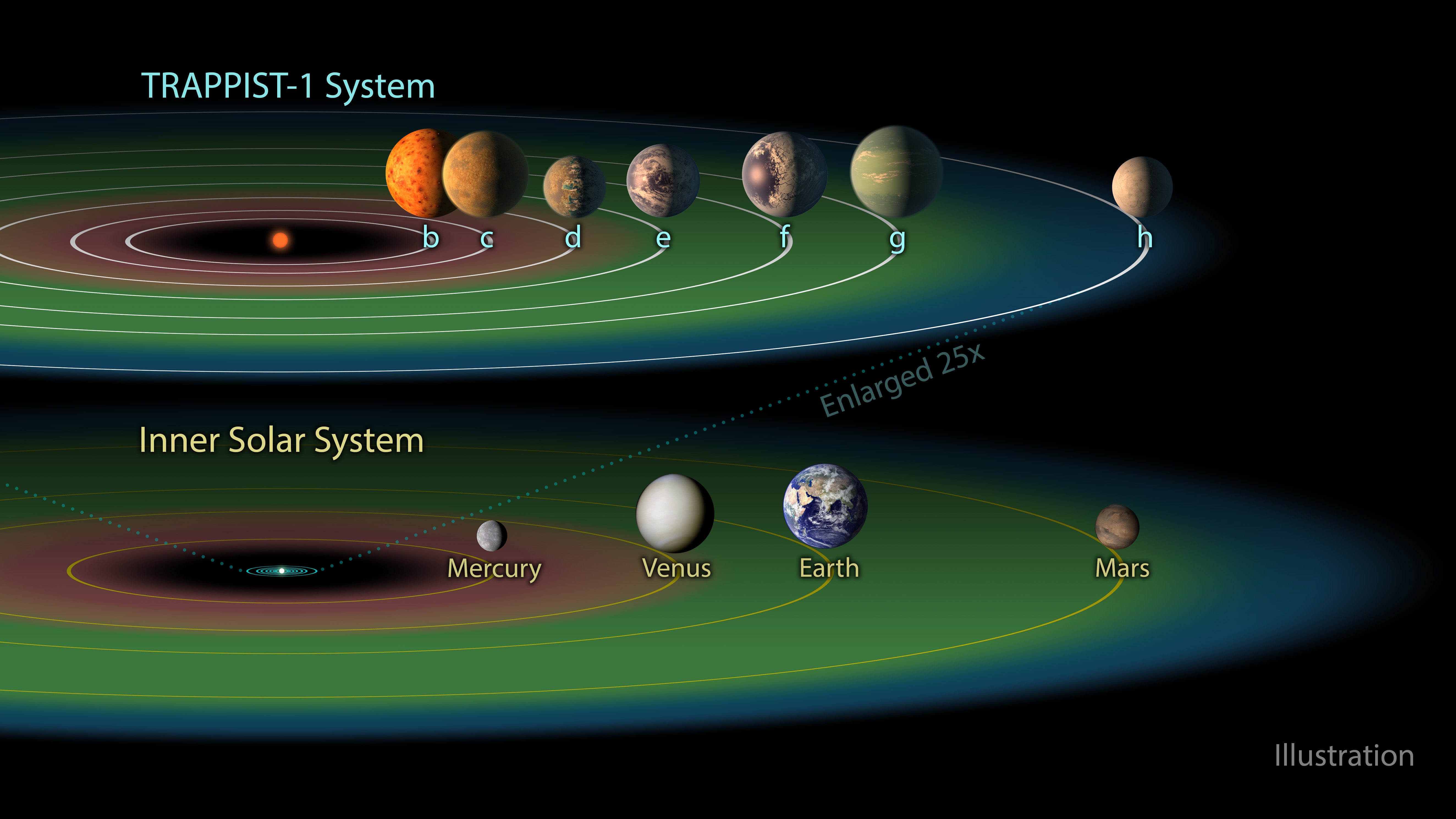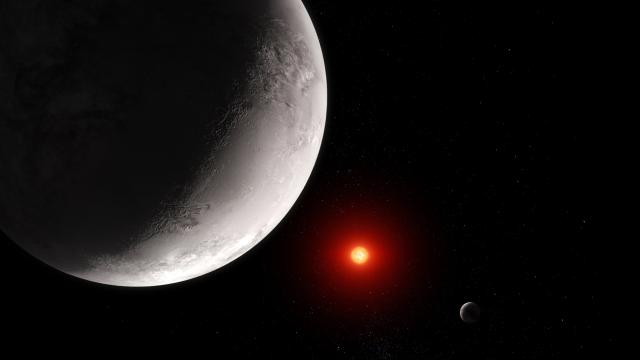About 40 light-years from Earth, a set of seven Earth-sized planets are orbiting a star called TRAPPIST-1. Now, scientists studying the system with the Webb Space Telescope have found one of them, TRAPPIST-1 c, either lacks an atmosphere or has a very thin one, indicating that habitable planets may be fewer and farther between in the universe.
The observations follow the Webb investigation of TRAPPIST-1 b, another world in the set. TRAPPIST-1 b also lacked an atmosphere, or the envelope of gasses that surround some planets.
If an atmosphere does in fact exist around TRAPPIST-1 c, the researchers say it’s likely to be thin, cloudless, and mostly composed of carbon dioxide, according to the Space Telescope Science Institute release.
Neither world is in the TRAPPIST system’s habitable (or Goldilocks) zone, so-named to being the vicinity far enough from (about also near enough to) the host star that it will have livable temperatures. TRAPPIST-1 c orbits its host star at a distance of roughly 1.5 million miles (2.41 million kilometers). TRAPPIST-1 b, c, and d, are too close to their star to be in the system’s habitable zone, according to NASA, but the absence of atmospheres around the former two affirm that they are uninhabitable.
Atmospheres are deemed crucial for life to exist on the surface (as opposed to dwelling in subterranean oceans, such as those found on Saturn’s moon Enceladus or Jupiter’s moon Europa). Besides providing air to breathe, planetary atmospheres allow worlds to retain and distribute heat they receive from their stars. So instead of having a world that’s hundreds of degrees on its dayside and well below freezing on the other, a planet can maintain a more regular temperature across its surface.
Even if a planet’s atmosphere is thin, the gasses swirling around the world could be used in future crewed missions to produce breathable air. The Perseverance rover proved as much in 2021, when it produced 5 grams of oxygen from the thin, carbon-dioxide-rich Martian atmosphere.
In the recent investigation, the Webb team studied emission spectra of TRAPPIST-1 c and the planet’s light curve, or the change in brightness that indicates the world’s temperature and whether an atmosphere might be present.
Like TRAPPIST-1 b, TRAPPIST-1 c is quite warm; the team clocked the world’s dayside temperatures between 170 and 280 degrees Fahrenheit (77 and 138 degrees C). The cool star the TRAPPIST planets orbit emits X-ray and ultraviolet radiation, which could erode any planetary atmospheres in its vicinity.
Besides peering at some of the universe’s earliest light, the Webb telescope — with its perceptive gaze at infrared and near-infrared wavelengths — is giving scientists newly detailed looks at exoplanets, or worlds beyond our solar system.

Following in the footsteps of the Transiting Exoplanet Survey Satellite (TESS) and the Kepler Space Telescope, Webb is revealing the constitution of exoplanets’ atmospheres and weather, helping scientists’ understanding of the diversity of worlds out there — as well as how many have habitable conditions like Earth. Finding habitable worlds is a crucial objective of space scientists, as the National Academies of Sciences, Engineering, and Medicine declared in its decadal plan.
NASA is doing its part. Having only launched Webb in late 2021, the agency recently revealed new details of its next-generation Habitable Worlds Observatory, a proposed space telescope dedicated to searching for Goldilocks planets. Until those plans come to fruition, Webb’s observations will help clarify what humankind can hope for — and expect — from the conditions of exoplanets around distant stars.
